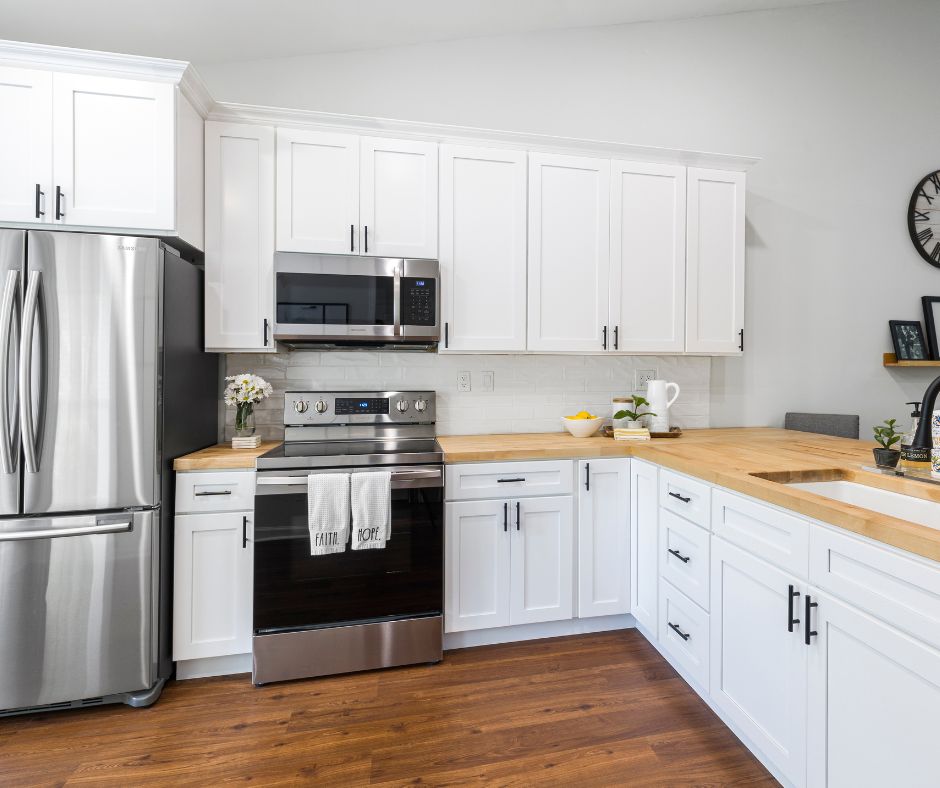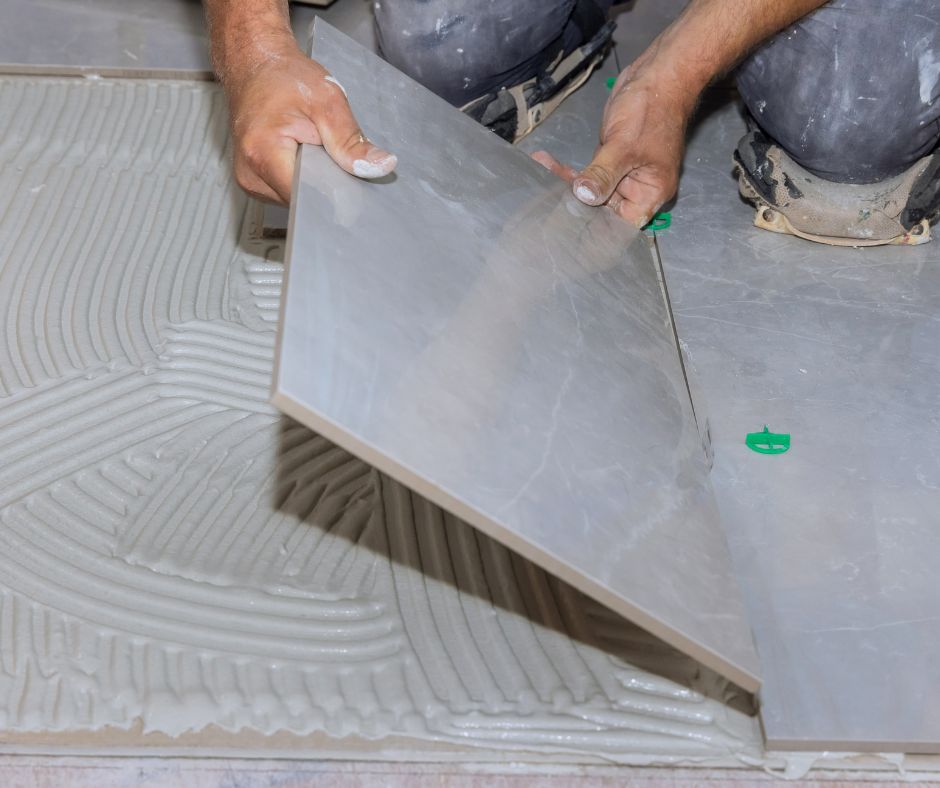Granite Countertops: The Ultimate Kitchen Upgrade | TOP 10 FAQS
Are you considering a kitchen makeover? Granite countertops have emerged as the epitome of elegance and functionality, making them the preferred choice for homeowners seeking to revamp their kitchens. We address the top 10 frequently asked questions (FAQs) about granite countertops, providing you with invaluable insights and information to help you make an informed decision for your kitchen renovation project. Whether you’re a seasoned homeowner or a first-time remodeler, this guide will serve as your go-to resource for all things granite countertops. Let’s dive into the world of exquisite kitchen upgrades with granite countertops!
Table of Contents
What Are Granite Countertops?
Granite countertops are elegant and durable kitchen surfaces made from natural granite stone. They are crafted from granite, an igneous rock formed by the slow cooling and solidification of magma deep within the Earth’s crust. This natural process gives granite its unique appearance, characterized by intricate mineral patterns, specks, and a wide range of colors.
Why Choose Granite for Kitchen Countertops?
Opting for granite for your kitchen countertops offers several compelling advantages. First and foremost, granite is celebrated for its exceptional durability, making it an ideal choice for high-traffic areas like kitchens. It can withstand the heat from hot pots and pans, and it is highly resistant to scratches and stains, ensuring its beauty lasts for years.
How Do I Select the Right Granite Color and Pattern?
Choosing the perfect granite color and pattern for your kitchen is an exciting part of the design process. Granite comes in a vast array of colors, from classic whites and grays to bold blacks and warm browns. Each slab of granite is unique, featuring its distinct mineral patterns and specks, making your choice a personal expression of style.
Are Granite Countertops Expensive?
The cost of granite countertops can vary widely depending on several factors, including the type of granite, its rarity, thickness, and the size of your kitchen. While some exotic and rare granite varieties can be more expensive, they offer distinct beauty and uniqueness. The thickness of the granite slab and the complexity of your kitchen layout can also influence the overall cost.
Read Also: Choosing the Right Kitchen Countertop Materials for Your Home | TOP 10 FAQS
What Is the Maintenance Required for Granite Countertops?
Maintaining the allure of granite countertops is relatively straightforward and involves regular cleaning and sealing. Cleaning is simple, requiring only a mild, pH-balanced dish soap and warm water. Avoid abrasive cleaners that can damage the sealant or scratch the surface. Gently wipe the surface with a soft cloth or sponge, then rinse with clean water and dry with a lint-free cloth to prevent water spots or streaks.
Sealing is an essential step in granite maintenance. Granite is naturally porous, which means it can absorb liquids if not adequately sealed. To protect your countertops, apply a high-quality granite sealer. The frequency of sealing depends on the type of granite and the level of use; however, most experts recommend sealing once a year or as needed.
Can Granite Countertops Be Customized to Fit My Kitchen?
Yes, granite countertops can be customized to fit your kitchen’s unique layout and dimensions. This customization is one of the many advantages of choosing granite for your countertops. Here’s a closer look at the customization process:
Measurements: The first step in customizing granite countertops is taking precise measurements of your kitchen’s countertop space. This includes measuring the length, width, and any irregularities in the countertop space.
Selecting Slabs: After measurements are taken, you’ll choose the specific granite slabs you want to use. Granite slabs come in various sizes and thicknesses, allowing you to select the ones that best suit your design preferences and budget.
Cutting and Shaping: Once the slabs are selected, they are cut and shaped to fit your kitchen’s unique dimensions. Professional fabricators use specialized tools and equipment to ensure precise cuts and smooth edges.
Edge Profiles: You can also choose from a variety of edge profiles to customize the look of your countertops. Common edge profiles include beveled, bullnose, ogee, and more. The edge profile adds a finishing touch to the overall design.
Sealing: Before installation, the granite slabs are sealed to protect them from stains and moisture absorption. This step ensures the longevity of your countertops.
Installation: After customization is complete, the granite countertops are expertly installed in your kitchen. This process involves securing the countertops to the cabinets or support structure using adhesive and brackets, ensuring a secure fit.
Final Touches: After installation, any seams are sealed, and the countertops are polished to a beautiful, high-gloss finish. The professionals will also ensure that sinks, faucets, and other fixtures are properly installed and sealed.
The installation process may take several hours or even a day, depending on the complexity of your kitchen layout. It’s crucial to hire experienced installers to ensure that your granite countertops are installed correctly and look stunning in your kitchen.
Are Granite Countertops Heat and Scratch Resistant?
Granite countertops are highly heat and scratch-resistant, making them an excellent choice for kitchens where cooking and food preparation are frequent activities. Here’s a closer look at their resistance to these common kitchen challenges:
Heat Resistance: Granite is celebrated for its ability to withstand high temperatures. You can place hot pots and pans directly on the surface without worrying about damaging it. However, while it’s heat-resistant, it’s not entirely heatproof, so it’s still a good practice to use trivets or hot pads to avoid extreme temperature changes that could cause thermal shock.
Scratch Resistance: Granite countertops are impressively scratch-resistant, able to withstand the daily rigors of chopping, slicing, and meal preparation. Normal kitchen activities, such as cutting vegetables or using kitchen utensils, are unlikely to leave noticeable scratches on the surface. However, using cutting boards for these tasks is a good practice to preserve the finish and sharpness of your knives and to maintain the pristine appearance of your countertops.
What’s the Installation Process for Granite Countertops?
The installation of granite countertops is a meticulous process that starts with precise measurements and ends with a beautifully finished kitchen surface. Here’s an overview of the installation process:
Measurements and Template Creation: The first step is taking accurate measurements of your kitchen’s countertop space. Using these measurements, a template or pattern is created, serving as a guide for cutting and shaping the granite slabs.
Slab Selection: You’ll have the opportunity to choose the specific granite slabs you want for your countertops. This is an exciting part of the process, as you can personally inspect the slabs and select those that align with your design vision.
Cutting and Shaping: Once the slabs are selected, they are cut and shaped to match the template precisely. This includes cutting out holes for sinks, faucets, and any other fixtures you have in your kitchen.
Edge Profile Selection: You can customize the appearance of your countertops by choosing from various edge profiles. Options include beveled, bullnose, ogee, and many more. The edge profile adds a unique finishing touch to your countertops.
Sealing: Before installation, the granite slabs are sealed to protect them from stains and moisture absorption. Proper sealing is crucial for maintaining the longevity and beauty of your countertops.
Installation: After customization is complete, the granite countertops are carefully transported to your home and expertly installed by professionals. They are secured to the cabinets or support structure using adhesive and brackets, ensuring a secure and precise fit.
Final Touches: To complete the installation, any seams are sealed, and the countertops are polished to a high-gloss finish. The professionals also ensure that sinks, faucets, and other fixtures are correctly installed and sealed to prevent any leaks.
The duration of the installation process can vary depending on the complexity of your kitchen layout and the number of countertops being installed. It’s essential to hire experienced installers who understand the intricacies of working with granite to ensure that your countertops are installed flawlessly and enhance the aesthetics of your kitchen.
Are There Any Eco-Friendly Granite Options?
Yes, there are eco-friendly options when it comes to choosing granite countertops. While granite is a natural stone, its environmental impact can vary depending on its source and the quarrying practices involved. Here are some considerations for eco-friendly granite options:
Sourcing: Look for suppliers that source their granite from responsible quarries that prioritize sustainability and ethical mining practices. Some quarries actively engage in reforestation efforts and habitat restoration to mitigate their environmental impact.
Recycled Granite: Consider using recycled granite. Some companies offer countertops made from recycled granite remnants or stone fragments. This not only reduces waste but also conserves natural resources.
Reclaimed Granite: Reclaimed granite is another eco-friendly option. It involves repurposing granite from old structures, such as buildings or bridges, and turning it into beautiful countertops. This process helps prevent discarded granite from ending up in landfills.
Local Sourcing: Choose granite that is locally sourced to reduce the carbon footprint associated with transportation. Purchasing granite from nearby quarries minimizes the energy and emissions related to long-distance shipping.
By exploring these eco-friendly options and discussing them with your granite supplier, you can make a more environmentally conscious choice for your kitchen countertops. It’s essential to ask questions and do research to ensure that the granite you select aligns with your sustainability goals.
Where Can I Buy High-Quality Granite Countertops?
To purchase high-quality granite countertops, it’s essential to find reputable suppliers and installers who specialize in natural stone surfaces. Here are some steps to help you locate the right source for your granite countertops:
Research: Start by researching granite suppliers and installers in your area. Look for companies with a solid reputation, positive customer reviews, and a history of quality work.
Recommendations: Ask for recommendations from friends, family, or neighbors who have recently installed granite countertops. Personal referrals can provide valuable insights.
Visit Showrooms: Visit granite showrooms to see the stone in person. This allows you to examine the colors, patterns, and finishes up close. You can also discuss your design preferences and requirements with showroom staff.
Request Quotes: Obtain quotes from multiple suppliers to compare prices and services. Be sure to inquire about any additional costs, such as installation fees or customization charges.
Check Credentials: Verify that the supplier and installer are licensed, insured, and certified. This ensures that they meet industry standards and regulations.
Review Past Work: Ask to see examples of their previous installations or portfolios. This gives you an idea of their craftsmanship and attention to detail.
Inquire About Warranties: Find out about warranties or guarantees offered for the granite and installation. This provides peace of mind in case of any issues.
Communication: Choose a supplier and installer with whom you have good communication. They should be responsive to your questions and concerns throughout the process.
By taking these steps and conducting thorough research, you can find a trusted supplier and installer for your granite countertops. Remember that investing in high-quality materials and professional installation will ensure that your kitchen upgrade is a success.
Conclusion
Now that you have all the answers to your top 10 questions about granite countertops, it’s time to make your dream kitchen a reality. Take the next step in upgrading your kitchen by exploring the world of granite countertops. Reach out to trusted suppliers and installers in your area to browse through a wide range of granite options and start planning your kitchen transformation today.
Don’t settle for anything less than the elegance and durability that granite countertops can offer. Whether you’re renovating your kitchen or building a new one, granite is the perfect choice to elevate your space. Experience the seamless blend of style and functionality that granite brings to your kitchen and enjoy the enduring beauty it offers for years to come.
Your journey to the ultimate kitchen upgrade begins now. Contact experts in granite countertops and take the first step towards enhancing the heart of your home. Let your kitchen reflect your style and sophistication with the timeless appeal of granite.










